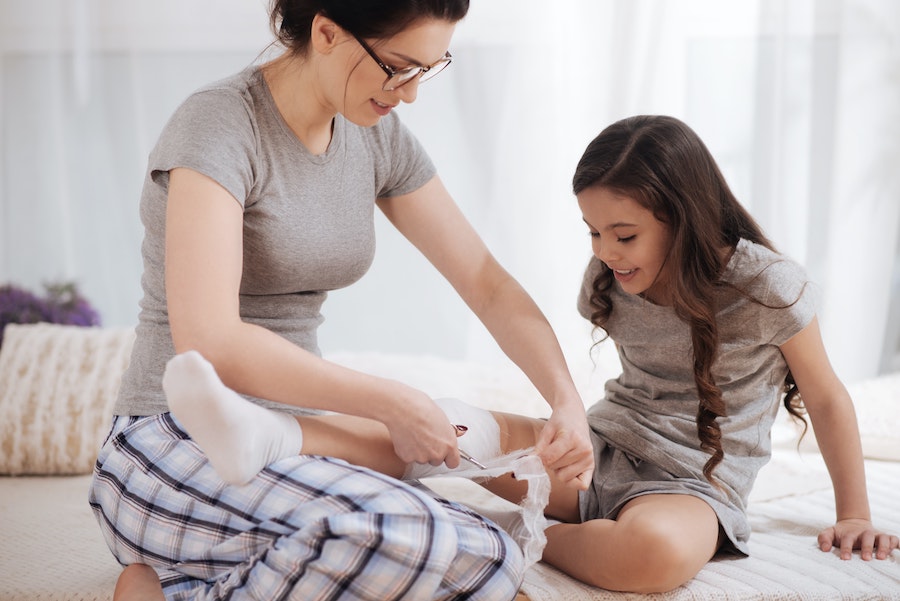Are you the Chief Boo-Boo Fixer in your home? Accidents and injuries can happen unexpectedly and having a well-stocked first aid station in your home can provide immediate care for minor injuries and potentially save a life in more serious situations.
In this guide, we’ll discuss the importance of having a first aid station in the home, what resources to include, where to keep it, and how to future-proof it.
Why you need a first aid station
In your home, a first aid station can provide immediate care for minor injuries, such as cuts, burns, and sprains.
This can help prevent the need for more advanced medical treatment and potential trips to the ER.
Additionally, in more serious situations, this resource can provide essential care until professional medical help arrives, potentially saving a life.
It’s also important to have a first aid station in the home to prepare for unexpected emergencies, such as natural disasters, power outages, or other situations that could impact access to medical care.
What resources to include
A well-stocked first aid station in the home should include the following resources:
- First aid manual: A comprehensive first aid manual should be included in every first aid kit. This will provide guidance on how to handle different types of injuries and emergencies.
- Bandages and dressings: These are essential for covering and protecting wounds.
- Antiseptics and disinfectants: These are necessary for cleaning and preventing infection in wounds.
- Gloves: These should be worn by the first responder to prevent the spread of infection.
- Scissors and tweezers: These are helpful in removing foreign objects from wounds and cutting dressings.
- Pain relief medication: These should be included in the first aid station to help manage pain.
Additional resources that may be included in a first aid kit include:
- Thermometer: This can be used to monitor fever and other signs of illness. With a preschooler in our house, this instant read thermometer is usually just sitting on the kitchen counter (haha).
- Cold packs: These can be used to reduce swelling and inflammation.
- Over-the-counter medications: This may include allergy medication, cough and cold medication, or other medications as needed.
- Emergency phone numbers: This should include the phone numbers for emergency services, poison control, and the family doctor or pediatrician.
Where to keep your first aid station
Your first aid station should be located in a central location that is easily accessible to all family members. It should also be kept out of reach of young children to prevent accidental ingestion or injury.
A common location for your first aid kit is in the kitchen or pantry. This location is central to the home and is easily accessible to all family members.
However, any central location that is easily accessible can work, such as a hallway closet or a dedicated first aid cabinet. (I keep ours in the hallway closet central to the main areas of the house.)
Future-proofing your first aid station
To future-proof this vital resource, it’s important to regularly check and restock supplies.
This can be done on a regular schedule, such as once a month or every six months, or after any use of the first aid station.
Additionally, it’s important to review and update the first aid manual as needed, particularly if new medical treatments or guidelines become available.
It’s also important to consider any changes in the family’s needs over time. For example, if there is a new baby in the home, it may be necessary to add supplies such as infant medication or specialized bandages.
Or, if an elderly family member moves in, it may be necessary to add supplies for age-related conditions such as arthritis or diabetes.
First aid station items to stock up on
A well-stocked first aid station in the home can provide peace of mind and potentially save a life in an emergency.
Here are a few items I keep and recommend, as well as a first aid kit to get you up an and running quickly. You can always add more as you go. Especially if your little one runs into a patch of poison ivy or sumac (yikes)!
To sum it up
By including essential resources such as a first aid manual, bandages and dressings, antiseptics and disinfectants, gloves, scissors, and pain relief medication, you can be prepared for a wide range of injuries and emergencies.
Remember to regularly check and restock supplies, and consider any changes in the family’s needs over time to future-proof your first aid station.




